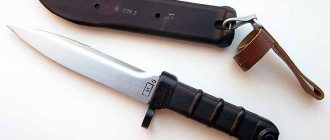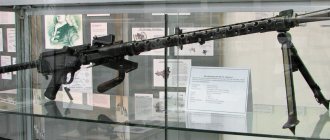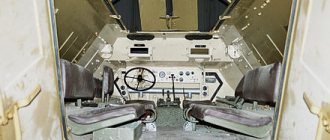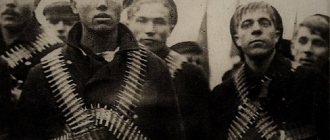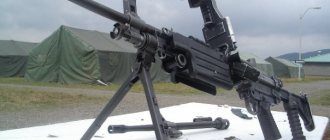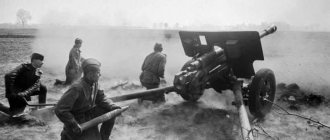People have been collecting in Russia for a long time, but collecting ancient unusual things became especially popular under Emperor Peter the Great in the 18th century, who himself strongly supported the import of unusual artifacts into Russia. It is worth noting that already under Peter the import of rarities and antiquities was not subject to taxes; on the contrary, it was encouraged. In the 19th century, collecting became widespread among the noble class; the foundations of museum collections such as the Pushkin Museum and the Hermitage Museum consist precisely of private collections collected in the 18th and 19th centuries. Here is a very revealing text from the book “Moscow and Muscovites” - a book by Vladimir Gilyarovsky, describing the traditions, life and customs of Moscow in the second half of the 19th - early 20th centuries. In particular, here is a description of a typical noble estate: “There was also a room: “dead room.” This is the most cheerful room, illuminated by a dark red lantern from the ceiling. Along the walls are various fossil mound antiquities, whole plateaus of ancient earrings and rings, weapons - dating back to the Stone Age - chain mail, helmets, reeds, scimitars. Along the walls there are wide Turkish sofas, in front of them there are tables with matches and ashtrays, and a hookah for amateurs. They sit, laugh, chat incessantly... Someone is strumming a balalaika, someone is dozing. And they called it “dead” because in the morning those who drank too much or who were very far from home usually slept on these sofas...”
Collecting German bayonets
You can collect anything. But if we consider collectible artifacts in the context of military paraphernalia, then we must pay tribute, first of all, to genuine collectible weapons.
Are you looking for antiques for your own collection or as a gift? We advise you to pay attention to this section. It presents lots that tell the history of the Third Reich. German military trophies of the 30-40s of the last century will be an excellent gift and addition to a private collection, since:
— Our antiques store has a wide range of bladed weapons from the time of the Third Reich. Here you can choose both ceremonial versions of officer daggers and sabers, and trench knives and bayonets that pose a real threat to enemies. When choosing a lot, you just need to decide what is more important to the future owner: the beautiful appearance of the bladed weapon or the history that is evidenced by every flaw in the lot.
— Most of the lots are in excellent condition. They will certainly decorate the collection, and in the absence of harmful factors, they will remain its pearls for a long time.
World weapon legends. Winchester 1897
Kalashnikov Media presents a new series of articles in which we will introduce our readers to legendary weapons from around the world. These will be historically significant, famous or simply interesting in design systems from different countries and periods.
We will begin our acquaintance with the legends with one of the most famous and successful smooth-bore shotguns with reloading with a longitudinally sliding fore-end (“pump action”), which predetermined the popularity of this class for the next hundred plus years - with the Winchester model 1897.
This gun was produced by Winchester Fire Arms Co for 60 years, from 1897 to 1957, with a total production of about a million guns of this system. This charismatic and easily recognizable gun is based on an 1890 patent obtained by now legendary gunsmith John Browning and his half-brother Matthew Browning. The first gun created on the basis of the brothers' patent was the 12-gauge Winchester model 1893 shotgun, but it was produced only for black powder cartridges. In 1897, the design of this gun was revised in the direction of strengthening and some improvement, and then the “ninety-seventh” Winchester began a triumphal march both across the United States and in many other countries. In addition to a large selection of purely hunting options with different barrel lengths, in different calibers and types of finishes, the “Ninety-Seven” was produced in a shortened “police” version. With the beginning of the First World War, on the basis of a police gun, a “trench” gun was created for fighting in the trenches, distinguished by the presence of a bayonet mount under the barrel and a metal plate on the barrel that protected the shooter’s hand from burns. It was such a serious melee weapon that the Germans, having become acquainted with it “from the muzzle”, tried to declare shotguns an “inhumane” weapon, contrary to international conventions. It must be said that against the backdrop of combat gases, tanks and heavy artillery, the shotgun did not look so scary, and the “trench Winchesters” successfully fought the entire First World War. They were then actively used in maintaining law and order (as well as in gang warfare) in the United States during the interwar period, and with the outbreak of World War II they again went into military service.
Despite the cessation of production of the Winchester model 1897 shotgun, its popularity turned out to be so great that its “unlicensed” copies are currently being produced in China, both in hunting and “trench” versions. Of course, the finishing quality of these copies is significantly inferior to the originals, but their price is also significantly lower than that of the “real” Winchesters that have already become collectibles.
How was this legendary shotgun constructed? The Winchester model 1897 shotgun had manual reloading using a fore-end that moved back and forth, located around the tube of the under-barrel magazine. The forend was connected by one rod to the two main elements of the unit for locking and feeding weapon cartridges - a swinging feeder and a bolt. The feeder was a massive part swinging in a vertical plane around a horizontal axis located in its rear part. With its front part, the feeder rested against a stepped protrusion in the lower front part of the bolt, preventing it from moving back and thereby locking the barrel bore before firing. The shot itself was fired using a trigger mechanism with an open hammer. When reloading, the backward movement of the forend first lowered the front part of the feeder down, releasing the bolt, then the bolt was pulled back, removing and ejecting the spent cartridge case and cocking the hammer. When the bolt reached the rear position, the feeder dropped even lower, so that the next cartridge from the under-barrel tubular magazine fell onto the tray on the upper surface of the feeder. When the forend moves forward, the feeder lifts its front part so that the cartridge on its tray is directed into the chamber, and the forward movement of the bolt sends the cartridge into the barrel. At the end of reloading, the bolt stops at the breech of the barrel, and the final movement of the fore-end raises the feeder all the way up, so that it locks the bolt again for the next shot.
A feature of the trigger mechanism of this gun was the absence of a disconnector, which made it possible to shoot without releasing the trigger - the next shot occurred immediately as soon as the fore-end came to the extreme forward position. During hunting, this method of shooting was of little use, but when storming enemy trenches or showdowns between police and armed gangsters somewhere in the industrial areas of Chicago during Prohibition, this method was often used.
The tubular magazine was loaded through the window below with the bolt closed.
As mentioned above, the Winchester model 1897 shotgun had a lot of options, including collapsible ones with a removable barrel. Most of the guns were equipped with fixed choke constrictions, but on a number of hunting modifications muzzle compensators of the Cutts system could be installed.
Concluding our story, we can mention that in the arsenal of the Kalashnikov concern there is also a shotgun with pump-action reloading, much more advanced in design and materials than the legend born in the 19th century. You can get acquainted with him using the link.
Buy bayonets, daggers of the Hitler Youth and fire axes in Moscow
The Wehrmacht had the Mauser 98K carbine in service with its infantry .
It was equipped with a blade-type bayonet (German: Seitengewehr 98k).
The German bayonet knife consisted of a blade (about 24 cm long), a small hilt, a handle and a spring latch. The handle could have either wooden cheeks or black or brown bakelite (this depended not on the time of production, but on the specific manufacturer of bladed weapons). In addition, in the Third Reich, soldiers and non-commissioned officers of the German army could purchase at their own expense a ceremonial version of this bayonet
(Extra-Seitengewehr 98k), which they could wear at the oath, parade or other ceremonies.
The German ceremonial bayonet-knife
was made of high-quality nickel-plated steel; it had a handle stylized as an eagle's head, an elongated hilt and black bakelite cheeks with a fine notch. There were two versions of the ceremonial bayonet knife: with a long blade (about 24 cm) for privates and with a short blade (about 20 cm) for non-commissioned officers. The sheath case for the ceremonial bayonet knife was made of patent leather; this case had a narrower base in the center and there were no metal rivets on it. Also, this bayonet-knife has historical and cultural significance. Additionally, we can say that the handles of the ceremonial bayonets are not of particular interest, but the same cannot be said about the blades themselves. For a fee, numerous factories in Solingen produced elegant etched blades. Most often they depicted scenes of battles of infantry, artillery, air force or cavalry. The most common motto at that time was “Zur Erinnerung An Mein Dienstzeit” (In memory of the service), which was applied along with the name of the unit where the customer served. Very often the name of the future owner was also engraved. The design of the bayonet was chosen from manufacturers' catalogs. The widest selection of blade etching was offered by Ernst Pack and Sohn Waffenfabrik - as many as 14 types. For an additional fee, it was also possible to order a non-standard engraving of the head, as well as the manufacture of a handle made of wood, plastic, natural horn or its imitation. The sheath of a standard bayonet was made of steel, but there were examples in black or brown leather with a metal device. In addition, the buyer could choose the desired length of the bayonet-knife.
Collectible antiques, military rarities and trophies of past warriors are always in a special place among connoisseurs of antiquities and antiques. And such people have been and will always be. Collections of captured weapons decorated both the chambers of the Roman patricians and the castles of the crusaders. In Rus', military trophies also decorated the walls of mansions (a princely palace, which consisted not of one large building, but of several buildings, was called a mansion). And the Tatar bow, and the Turkish scimitar, and the cuirass of the Polish hussar were worthy decorations for the home of a noble knight or governor.
For out-of-town connoisseurs of antiques and those interested in the history of the 3rd Reich, we offer cash on delivery by mail. Delivery conditions can be clarified by calling the numbers listed in the header of the site.
New in blogs
The economies of the warring countries did not cope well with orders for trench knives, being mainly occupied with the production of cartridges and shells. Therefore, these First World War weapons were often produced directly on site - in army front-line repair shops. Of course, there is no point in talking about the quality or finesse of finishing here. Tunic? Yes. Great, next one. At times, the shortage of factory-made weapons during the First World War led to the cottage industry of real mutants. These include combat flails, which are easy to manufacture and effective in battle. The last cases of the use of a combat flail on the battlefield were recorded during the First World War, when interest in archaic types of weapons was caused by the reality of trench fighting. This simple device, which greatly increases human chances of survival, was distributed in one form or another throughout almost the entire territory of the globe. The Russian flail, the previously mentioned German morningstern, the kropach of the Czech Hussites, the South American bolo, and the nunchaku originally from Japan. All of this is basically the same thing.
Another very characteristic type is the Austrian and German “flexible” mace. A 15-centimeter wooden handle was connected to a spherical, cubic or ovoid metal striking part (both with and without spikes) by means of a spring or a piece of rigid steel cable about 25 cm long (a cube-shaped pommel was typical of German maces). This design of the mace facilitated the delivery of strong “whip” blows, which were guaranteed to stun even an enemy protected by a helmet. Moreover, such a mace, by definition, did not break. The pommel could be attached to the cable handle either rigidly or hingedly: in the latter case, it was no longer a mace, but rather a flail. Of course, such weapons were made in a factory way. On the striking parts of Austrian flails there is a mark in the form of the letters FKG. The Austrians, however, actively used maces of traditional design. So active and successful that the Entente states launched a serious propaganda campaign against them, as well as against the German flamethrowers. It was alleged that the Austrians used maces solely for the purpose of finishing off the wounded or those poisoned by gases. The reason for such statements was an incident that actually took place. On June 26, 1916, the positions of Italian troops in the Mont Saint Michele area were subjected to a gas attack by the Austrians. Following the gas cloud, soldiers of the 7th and 20th Hungarian regiments burst into the Italian trenches, and in the ensuing hand-to-hand combat they actively wielded batons. Since the Italians were mostly gassed, they became incapacitated and were unable to provide adequate resistance. Many of them were killed precisely by blows from clubs.
The last resurrection of the combat knife began during the First World War. Allied forces used it for forays behind enemy lines, as well as in close combat during attacks. Behind enemy lines, the knife was usually used to capture prisoners, since at that time it was the only silent weapon aimed at stabbing. France The army needed a compact knife or dagger, adapted both for short combat and for solving everyday problems that a soldier faces every day. Popular mainly in France, stilettos (thrusting weapons without cutting edges) were excellent piercing weapons, but were completely unsuitable for cutting blows and use as a tool. Even less convenient were primitive crafts in the form of sharpened metal stakes, staples, the so-called “French nails.” The second side was bent into “O” beeches, becoming a primitive brass knuckles. However, their simplicity caused them to spread on both sides of the front and, as a result, to become widely used by all warring parties.
Given the need for this weapon in trench warfare in hand-to-hand combat and in covert night raids, the US Army Ordnance Department selected a needle-shaped blade for it, which easily penetrated warm winter uniforms and equipment, reaching the vital organs of the body. The solid wooden handle had a solid semicircular iron guard with protruding teeth, which made it possible to deliver crushing blows with a fist. The cylindrical scabbard was wooden. The blade of the US1917 brass knuckle stiletto was shaped like the tip of a sword with a thickening, which made it easy to penetrate body tissue and inflict a dangerous wound. For a person who was not a professional military man, this weapon was unsurpassed in its kind. However, the soldiers needed a knife with a working blade that could be used not only in battle. The American Model 1917 dagger, with its 230mm triangular blade, wooden handle and metal “mallet”, was a magnificent combat tool. Its blade easily pierced the skin and the thickest winter uniform. However, the troops wanted to have a tool more suitable for use in the camp than this dagger or French bayonet. Therefore, in 1918, the US Army began to supply the Mark 1 bayonet, which had a 150-mm blade with two cutting edges, like an ordinary French dagger, and a handle cast from brass with indentations for the fingers. This design remained the standard American combat knife until the introduction of the MZ knife in 1943. Even though the MZ was called a “trench knife,” it was actually designed for the air force and was much lighter. Its pointed blade was then used in the M4 (M1/M2 carbine), M6 (M14 rifle) and M7 (M16A1/M16A2 rifle) bayonets.
Source
Knives of the Third Reich
We are talking about knives specifically as bladed weapons, because other aspects of social life were of little interest to the Nazi leadership. But at the same time, it was also a necessary attribute of the dress uniform, as a symbol of the unity of spirit and cohesion of the nation. The components of the uniform were clearly spelled out, and everyone who did not want to face inevitable punishment had to follow them.
The troops of the Third Reich were divided into 3 main components:
- ground army;
- air force;
- fleet.
The country's leadership was equally engaged in the improvement and modernization of all types of its troops. Taking into account the plight of Germany after the defeat in the First World War, the decline of the economy, changes were an objective necessity of the then realities.
In order to begin arming our troops and numerous party and non-party organizations, we first had to establish our own production. A. Hitler’s gaze turned, of course, to the “city of swords,” as Solingem was sometimes called. This manufacturing city had a solid history of knife production, but it was in decline due to the historical and economic situation. Already in 1933, the Fuhrer made his first order to the craftsmen, which involved the production of sabers and daggers to decorate the ceremonial uniform.
The resulting models were given to members of the SA and SS assault squads for armament.
The SA officer's dagger of the 1933 model was a slightly modified formula of the famous model of the Holban hunting dagger, which was developed back in the 16th century. Its length was 37 cm. The handle was made of wood and painted brown, which was a symbol for the SA unit. This knife was symbolically overloaded. So, in the center of the handle there was a Nazi emblem depicting an eagle holding a swastika in its hands. The upper part of the handle was equipped with the name of the unit, and in the center of the blade there was an inscription with the motto “Germany above all.”
The first dagger of SS members was issued in the same year of 1933. In its main features it repeated the previous model, with the only exception that now the color of the hilt and scabbard was painted black. After all, he was the hallmark of the organization. The motto on the knife blade also changed; now it was: “My honor is called loyalty.”
An interesting model belonging to the category of “ knives of the Third Reich” is a cleaver of the German Labor Front of the 1937 model. It was a massive weapon, the purpose of which was suitable for field work. The predominant importance of physical labor was clearly indicated by the inscription on the blade: “Labor ennobles.” Its length reached 40 cm. The handle was fastened with two screws; deer antler was chosen as the material.
Undoubtedly, the Luftwaffe officer's dagger from 1935 is worth a look. It was a straight hexagonal blade with 2 blades, made of steel. The weight of the product was 567 g. The swastika is depicted on the guard, and the handle is twisted and made of wood.
The army dirk, which was a product with a total length of 40 cm, was also popular. Its blade had a smooth surface, as a rule, without any engraving. However, at the request of the customer, it was possible to apply a certain motto or drawing. The length of the blade ranged from 25.5 to 26.5 cm. At first, the handle was made of cupronickel. However, with the progress of the war and incessant orders, it was necessary to abandon it and switch to more economical materials, such as wood and even plastic, or to combine both of these materials.
History[ | ]
With the transition to protracted positional actions, the shortcomings of the standard bayonet and knife bayonet, which were in service with most countries, quickly became apparent: a rifle with an attached bayonet was perfect for hand-to-hand combat in open space and repelling cavalry attacks, but for battles in cramped trenches it was inconvenient; knives of that time had a length of 350-550 mm and were poorly suited to the new conditions of war. Soldiers began to use hunting and kitchen knives en masse; in field workshops they made improvised stilettos from metal rods; old and captured bayonet knives, cutlasses, and cavalry sabers were shortened and sharpened[2].
Under these conditions, the command of the warring countries decided to centrally supply troops with knives for fighting in trenches. According to order No. 47184/15 of the Prussian War Ministry dated May 8, 1915, each infantry company of the Western Army was entitled to 6 dagger-type knives; later the number of trench knives per German infantry company was increased to 12, 24 and 40 units. German knives usually had a one-and-a-half sharpening, which made it possible, with good penetrating abilities, to retain the possibility of using the knife in everyday life[3]. In France, the first trench knife was officially adopted only in 1916 under the name “Le Vengeur 1870” (The Avenger 1870 - an allusion to the Franco-Prussian War of 1870-71), this knife was a double-edged dagger with a straight blade. Production of this model began even before its official adoption on October 7, 1915. Then other knife companies joined in its production, which made it possible to provide them with the French army in a short time[4].
The most famous are the American trench knives-brass knuckles M1917 (with a triangular needle blade) and M1918 (double-edged blade, identical to the Le Vengeur 1870 blade).
